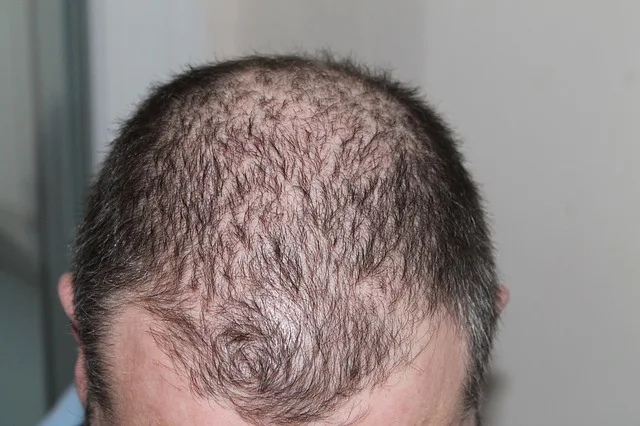Ad Code
Translate
List of 6,000+ Dofollow Commentluv Blogs FREE (Updated 2025)
January 16, 2025
What is Ozempic (semaglutide)? (Updated in 2025)
January 30, 2025
How To Find Suitable Properties In Cyprus? (Updated in 2025)
January 11, 2025
Smart strategies for trading on crypto exchanges
February 18, 2025
Hair Loss Prevention - Tips to Help Save Your Hair
Khabza Mkhize
April 18, 2024
Hair shedding is normal. Each hair strand on our scalp has a lifespan of between two to seven years. The hair follicles undergo three phases, active growth, transition, and rest. However, life factors can cause the hair to reach the rest phase, during which it falls out. While losing 50 to 100 strands a day is normal, you should be wary when you begin to shed significantly more than that.
Here, we discuss why your strands may fall out and how to remedy the problem.
Causes of Hair Loss
Genetics
Heredity is the most common cause of hair loss in both men and women. This type of hair loss is also called androgenetic alopecia or female/male pattern hair loss. In women, the condition usually starts with the part line gradually thinning, followed by increasing hair loss from the top of the head. In men, androgenetic alopecia begins above the temples and hair on top of the head also thins, normally progressing to baldness.
· Pregnancy
Also known as postpartum telogen effluvium, hair loss after childbirth is caused by a fall in estrogen levels after pregnancy. This temporary condition typically happens three to six months after pregnancy and resolves within six to eight months after onset.
· Anemia
The experts of Alpha Hair Clinic say iron deficiency can also affect hair health. Hair follicle cells are sensitive to low levels of iron and may not be able to effectively grow new cells when there are low iron stores.
A wide range of conditions can cause hair loss, including polycystic ovary syndrome (PCOS), thyroid disorders, autoimmune diseases, and skin conditions such as seborrheic dermatitis and psoriasis visit numan.com for more information. Shedding hair can also be brought about by physical trauma like serious illness, extreme stress, taking too much Vitamin A, and losing too much weight over a short period.
How to Prevent Hair Loss
You can follow these five hair loss treatment tips to keep hair loss at bay.
1. Avoid wearing a tightly pulled hairstyle
Hair is flexible, but it can only be stretched so much before it becomes permanently damaged. Hairstyles like ponytails, cornrows, buns, tight braids and up-dos can result in pulling hair away from the scalp, thinning hair and causing follicles to break around the hairline, resulting in traction alopecia.
2. Eat a nutritious diet
Hair thrives on vitamins such as Vitamin A and B12 and minerals like zinc, iron, proteins, and omega-3 fatty acids. To ensure you eat a healthy diet, load up on foods with nutrients like lean meat, fish, beans, nuts, leafy greens, and fruits. These foods provide compounds and essential nutrients that promote hair growth and fight hair loss.
3. Ditch high-heat hair styling tools
Frequently using heat on the hair can cause the hair strands to fracture, damage the hair shafts and leave your hair follicle dehydrated. This can cause brittle hair and excessive hair shedding. Curling irons, hair straighteners, and hair dryers are good examples of hair tools that can damage your hair over time. If you have to use any of these tools, make sure not to leave it in one area for more than ten seconds.
Also, avoid hot showers as they can strip the scalp of essential oils that protect it, causing dryness, thinning, and miniaturization of the hair follicles.
4. Change your hair products
Hair treatment and other styling products can cause damage to the hair and scalp. The chemicals in these products stay on the scalp and get trapped in the follicles, preventing hair from surfacing. If you are concerned about your hair falling out, limit your use of hair gels, dyes, perms, peroxide treatments, and hair gels. You can also try more natural styling products.
5. Consider prescription medications
There are several clinically approved drugs for fighting hair loss. Some work by increasing nutrients and blood flow to the follicles, while others inhibit dihydrotestosterone (DHT), a hormone that causes the hair follicles to shrink and fall out. However, you should consult a healthcare professional before starting hair loss treatments. Some have side effects in a minority of patients, such as decreased libido, allergic reactions or skin irritation.
Additionally, individuals considering microneedling as a hair loss treatment should be aware of the potential risk of infection from microneedling, as highlighted in this informative article on Perfect Hair Health.
Featured Post
12 Prominent new technologies and trends emerging in 2025
Khabza Mkhize-
April 02, 2025
Soapie Teasers
Sister Sites
Most Popular
List of 6,000+ Dofollow Commentluv Blogs FREE (Updated 2025)
January 16, 2025
Smart strategies for trading on crypto exchanges
February 18, 2025
Popular posts
List of 6,000+ Dofollow Commentluv Blogs FREE (Updated 2025)
January 16, 2025
Smart strategies for trading on crypto exchanges
February 18, 2025
Footer Menu Widget
Created By Blogspot Theme | Distributed By Gooyaabi Templates


0 Comments